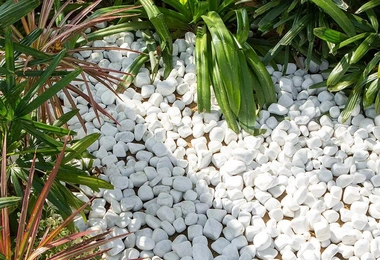Ensure you get the right amount of material for your project with the Howarth Timber Aggregate Calculator. Whether you’re laying a driveway, creating a garden path, or filling a space with decorative stones, this tool helps you accurately calculate how much aggregate you need.
Our gravel calculator makes it simple—just enter the length, width, and depth of the area you want to fill, and it will provide an instant estimate. No more guesswork when asking, "How much gravel will I need?" or "How much gravel do I need per square metre?"—our tool gives you precise results.
The calculator works with various materials, including gravel, pebbles, and slate chippings. Whether you need a slate chippings calculator for a decorative feature or a pebble calculator for a landscaping project, we’ve got you covered.
Save time, reduce waste, and ensure you order the correct amount of aggregate with the Howarth Timber Aggregate Calculator. Try it today for quick and easy planning!
You may also need...
Decorative Aggregates Best Sellers
Aggregates Best Sellers
5 important facts to consider when calculating how much gravel you need per square metre
Depth of Coverage
The required depth of gravel depends on its use. For driveways, a depth of 50mm (2 inches) is recommended, while pathways and decorative areas may only need 25mm (1 inch). Deeper layers require more gravel.
Gravel Size and Type
Different types of gravel, such as pea gravel, crushed stone, or slate chippings, have varying densities and coverage rates. Larger stones need a greater depth for full coverage compared to smaller aggregates.
Compaction Factor
Gravel settles over time, especially under heavy use. It's advisable to add around 10-15% extra material to account for compaction and ensure full, lasting coverage.
Surface Area Measurement
Accurately measure the length and width of the area in metres. Multiply these values to get the total square metre coverage, which is essential for precise calculations.
Wastage Allowance
Always account for material loss due to spillage, uneven surfaces, or adjustments during installation. A buffer of 5-10% ensures you have enough gravel to complete your project without running short.
By considering these factors, you can confidently calculate the right amount of gravel for your project, ensuring efficient use and minimal waste.
How to Guides

How to clean white garden stones
Find inspiration to transform your outside garden into a gorgeous sanctuary with raised flower beds, pathways and edging, and decorative elements with our 5 garden sleeper ideas article.

Garden Ideas Using Slate Chippings
Discover creative garden ideas using slate chippings, including pathways, decorative borders, water features, and more. Learn how to lay slate chippings and determine how much you need for a stunning, low-maintenance garden.



